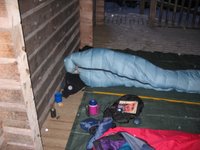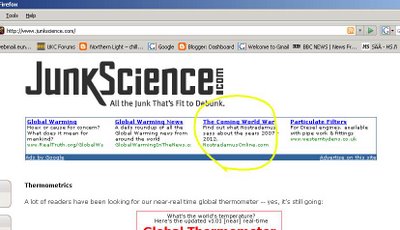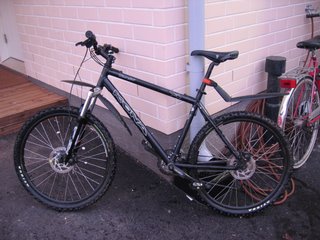
Every day for about the last two weeks I've been thinking I should write something about Somalia, as it a subject that I have followed since starting this blog. But after having had to scrape around to read decent reporting and analysis on the country for most of last year, the current fighting has brought with it a veritable avalanche of attention to what was previously a rather marginal part of the world. Suddenly there has been almost too much news on Somalia to read and listen to.
For work I've followed US counter-terrorism operations in Africa for the last year and half quite closely. The US forces in Djibouti,
CJTF-HOA, - where presumably the AC-130 that was trying to kill the al-Qaeda suspects (and
probably failing) came from - have kept a much lower media profile than the smaller but more publicised
Trans-Saharan Counter-Terrorism Initiative (TSCTI). My feeling has been that the CJTF-HOA has never really needed to justify its budget - it is run by CENTCOM, unlike the the TSCTI which is an EUCOM operation, and there are very few serious analysts of the region who dispute that its likely that the people who were responsible for bombing of the US embassies in Kenya and Tanzania had probably found refuge in Mogadishu, and were probably being sheltered by people who were in some way connected to the Islamic Courts Union. The TSCTI's claim to be helping to secure the Sahara against terrorists is much more tenuous.
But despite the ICU-al Qaeda link, coverage in the west that said the ICU was controlled by al-Qaeda, was just over-egging it to fit Somalia more neatly into the "War on Terrorism" discourse. It was clear even back at the start of last summer that the ICU was an unwieldy conglomeration of different interests, including differing clan loyalties. This probably accounts for its bad strategic decision making and its disintegration in the face of the Ethiopian advance. Yet disintegration is very far from being a rout, as the disintegration of the Iraqi Army in February 2003 so clearly shows. It would appear that many of the Islamist fighters "
slipped away" taking off their uniforms if they ever had them in the first place and just going home. There have already been
guerilla attacks on Ethiopian and Transition Federal Government (TFG) forces, and the Ethiopians are saying they want to leave soon, as they obviously see more of the same on the horizon and don't want their own mini-Iraq. This is causing American nervousness about a vacuum resulting; the TFG's forces are small and seem to comprise mainly of militiamen from the various factions currently behind the TFG, it is not clear that they could provide security without the support of the Ethiopian army.
The TFG is not starting off from a strong position. It has international support although the
Arab League are whining. But within the country its seems that the population is yet to be convinced. In the last few days, I have
read and
heard two different Somali women saying that the Islamists had brought security to Mogadishu. This means the TFG - with African Union support (and that will need wider international support) - will have to rapidly make sure they can also provide human security to the population to the same degree or higher. This will test the resilience of the TFG, which is just as much an unwieldy coalition as the ICU was - but perhaps without the unifying ideology that religion provided the ICU. Yet the biggest hurdle for the TFG is that it is seen as a puppet of the Ethiopians and to some degree the US. This why the US air strike, particularly if the reports of civilians deaths whilst the targets escaped turn out to be true, was a bad idea. The AC-130 gunships seem rather blunt weapon, and the impression that it gives is that the US is indifferent to lives of uninvolved civilians, leaving aside all questions of sovereignty. As well as just further souring relations with the Muslim world generally, it clearly destabilise the TFG specifically in the eyes of Somalis by offending their
nationalism. These points were being hammered home by guests on the
NPR Dianne Rehm show yesterday, including Michael Scheuer - the former head of the CIA bin Laden unit.
That'll have to do for now, but I will return to this subject soon.
 (pic. from Foreign Policy magazine, showing Indian security forces at work in Kashmir)
(pic. from Foreign Policy magazine, showing Indian security forces at work in Kashmir)




























